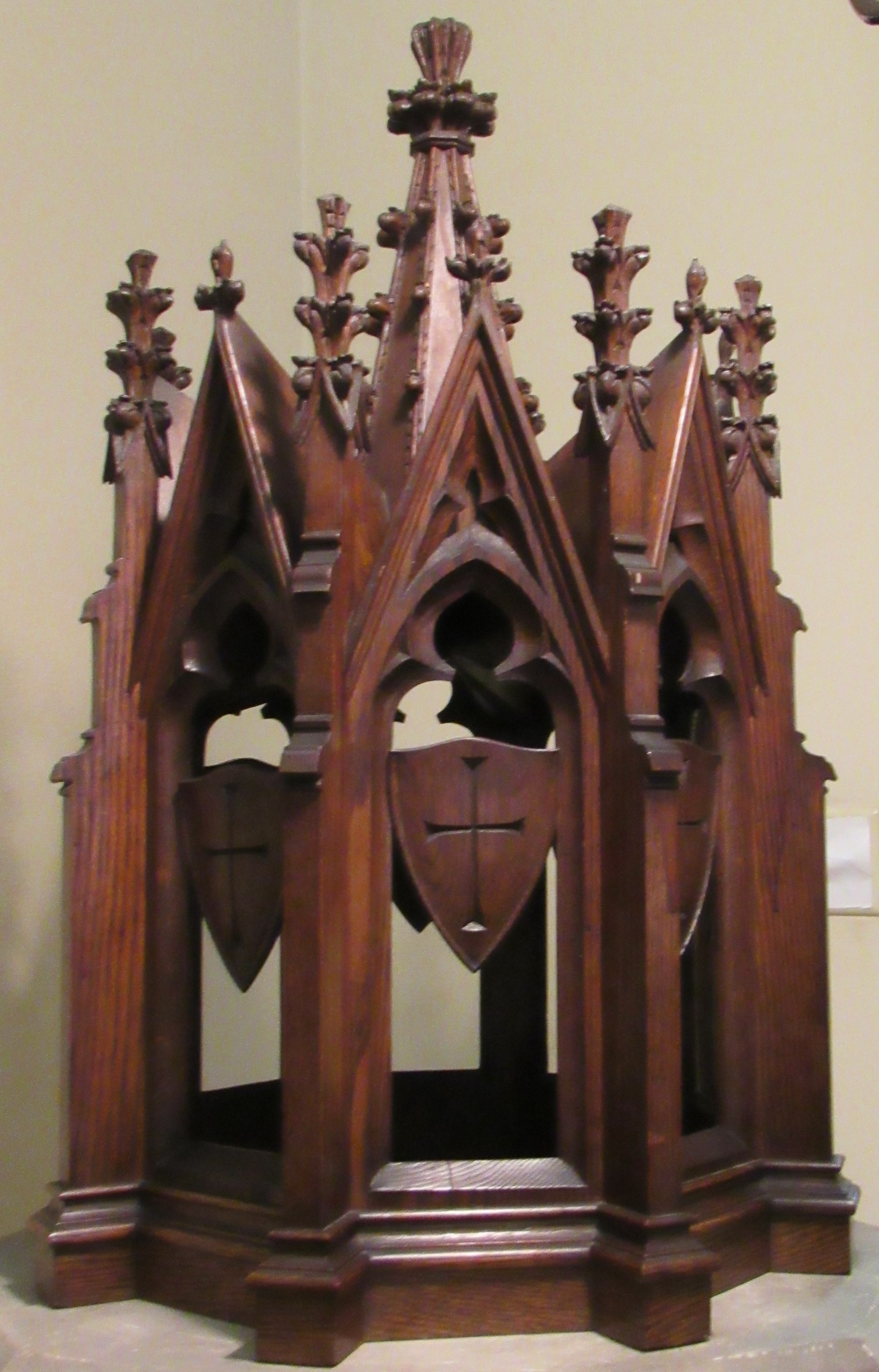Caen Stone Baptismal Font

"On Easter Eve, April 18, 1908, the new Font was used for the first time. The Font was made of Caen stone in the Gothic design. Sometime in early 1912, a new font cover was proposed but because of insufficient funds it had to be delayed until a later date.
Easter 1913, came with all of the usual pomp and glory, with confirmation in the evening. At this service on March 23rd, the new font cover was placed. It was made of oak matching the woodwork of the organ case. It was built by the Sperry-Ames Company. The workmanship of the cover reflected great credit to its craftsman. It became an attractive and useful furnishing of the Chapel. This cover was a memorial for Mrs. Frances Addie Jacobs, our first Sunday School teacher, who passed on in 1911." (author unknown)
In 2016, the Baptismal Font was moved out of storage, where it had been for more than fifty years, into the sanctuary of Christ and The Epiphany Church.
Caen Stone
Caen stone (or Pierre de Caen) is a soft, fine-grained, light- creamy yellow Jurassic form of limestone quarried in Northwestern France near Caen in Normandy and extensively used in buildings in Paris, and from the 11th to 15th centuries in buildings in Britain. Caen stone is too absorbent to be used outside, but was widely employed for interiors and was used in the construction of Westminster Abbey, Canterbury Cathedral and Eton College.
Caen stone was also used in the construction of the late eleventh century Church of Saint-Etienne, at the Abbaye-aux-Hommes (on the east side of Caen), which was founded by William the Conqueror. His tomb is located there. The Church of La Trinite, at the Abbaye-aux-Dames (on the west side of the city), was founded by William’s wife, Matilda. Her tomb is located there. Both abbeys are beautiful Norman Romanesque structures, and were unscathed by intense bombing campaigns in July 1944 that destroyed much of the city.
This stone was also a popular building material with the Normans in England. It was used in both the cathedral and castle at Norwich, where it was brought by boat up the River Wensum. Perhaps the most famous buildings built in Caen stone are the Tower of London and Buckingham Palace.
![]() |
| ![]() |
| ![]() Share
Share




